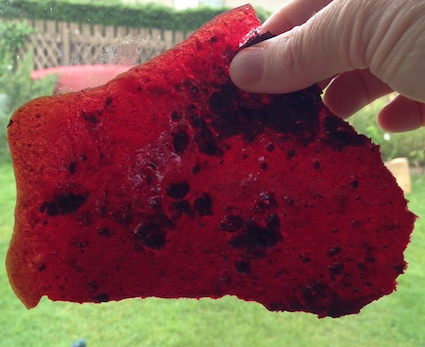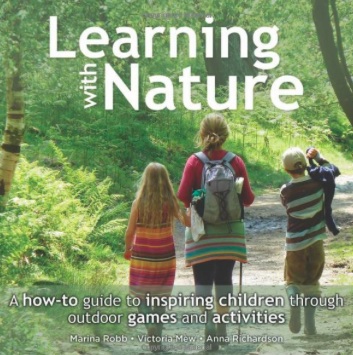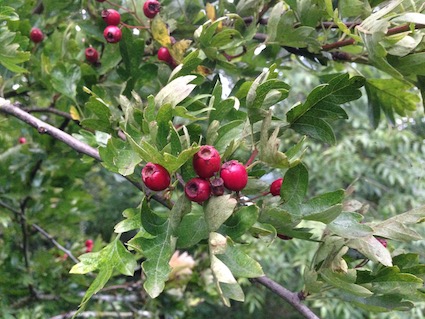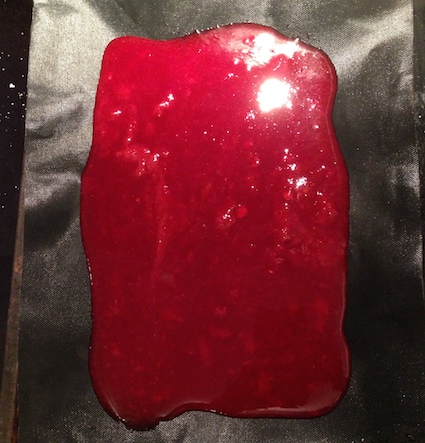
Every autumn or spring, I like to try something new or different to make with foraged or grown fruit and berries. I’ve tried making rosehip syrup which was lovely. This year I managed to be sufficiently organised to try my hand at making a fruit leather.

You can find plenty of advice online about making fruit leathers. However I was particularly inspired by the simplicity of the recipe given in the Learning with Nature book. The authors provided a method which can be done entirely outside with children using hawthorn berries and one cup of boiling water.

Hawthorns are great in that the leaf shape and berry are fairly hard to confuse with potentially harmful berries or plants. They are also abundant within the UK and so there’s lots of berries. I didn’t feel as though I was starving too many birds of a food crop.

As blackberries were growing wild, I decided to add these to the leather as well. I rather like their taste and this year has provided a large crop. At this point, as dusk was gathering, I cheated and stayed inside. I gave the berries a quick boil with a few teaspoons of sugar. Then set about the lengthy task of mashing them. This is where kid-power would have been useful as I needed to do a lot of mashing through the sieve to get rid of all the little hawthorn stones.

Next I laid the mashed and pureed berries on a silicone sheet and baked it in the over for over two hours on the lowest temperature. I then went to sleep and in the morning woke up to a lovely tasty fruit leather. The photo below shows the beautiful colour and texture of the fruit leather. It can be cut into strips, or any other shape you fancy.

What I liked about making a fruit leather was that I didn’t have to be an expert – I needed to know which berries to pick. Furthermore, making fruit leathers is a brilliant way to illustrate how our ancestors managed to survive cold winters with little fruit or vegetables available. By preserving fruit in a dried leather, it was an available source of vitamin C and fibre outwith the growing seasons. So our hunter gatherer forebears were probably accomplished fruit leather makers.




















Hi Juliet
Thanks for this,
I’ve not really understood fruit leathers and when I’ve seen shop type ones have worried about reason for them alongside sugar content.
This article makes a lot of sense and link to past was missing link I needed
Happy foraging
Mandy
Hello Mandy
Thanks for your comment. You’ve raised a really good point. I added sugar to my leather because I have a sweet tooth and it was a practice run. The recipe in the “Learning with Nature” book is without sugar. However, I am aware that many school dental nurses ask schools to be aware of the fructose and natural sugars in fruit and thus advise that dried fruit is treated like a sweet snack and should only be eaten with a meal.
Best wishes
Juliet